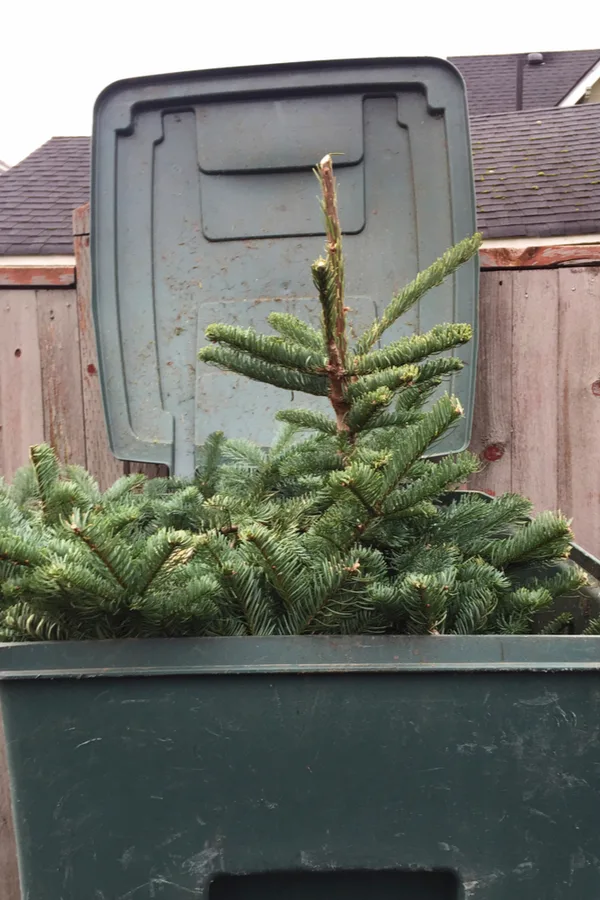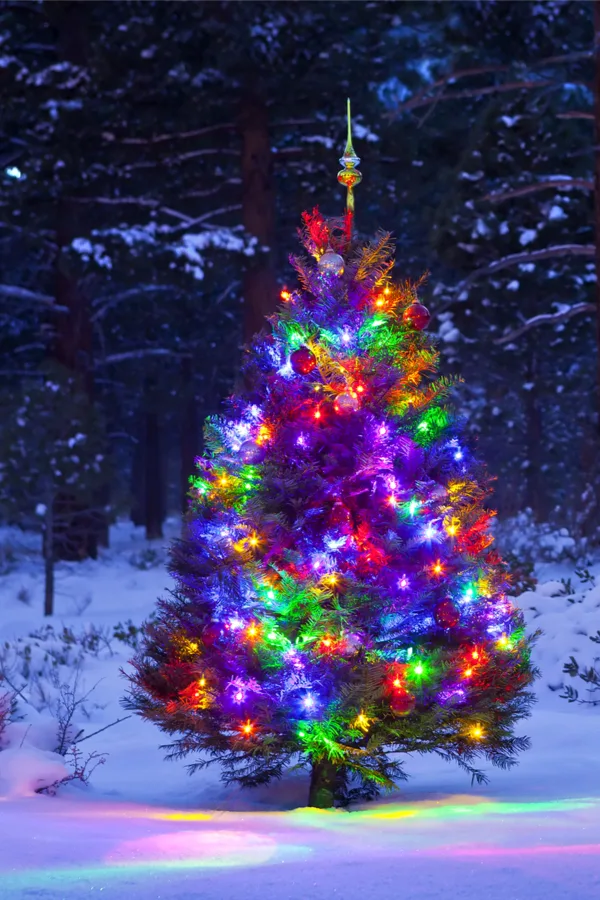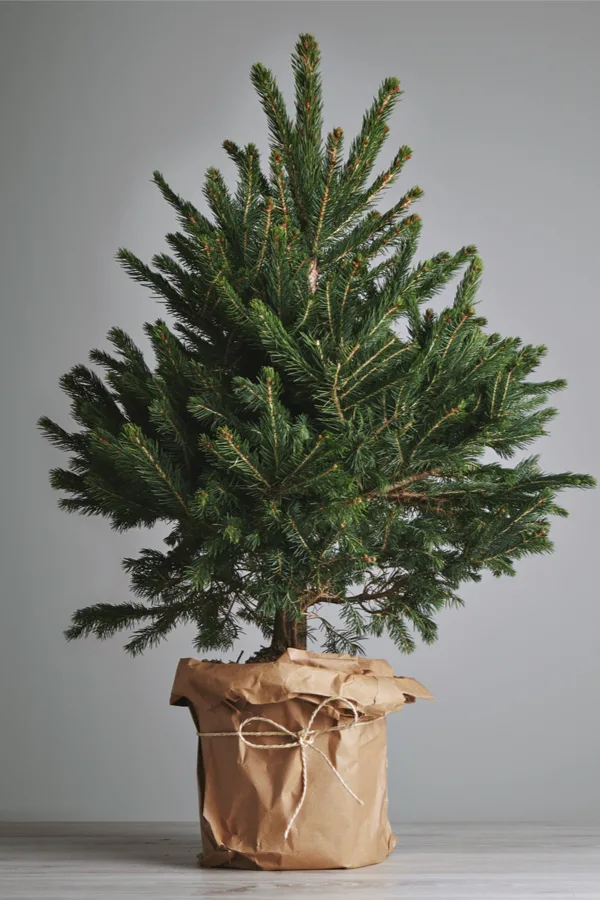If you are considering purchasing a live Christmas tree this year to celebrate the season, there are a few key tips and tricks to make it sure it can stay alive both during the Christmas season, and for years to come.
Although cut trees are still quite popular, many are looking for a more sustainable option when it comes to selecting a Christmas tree for their home – and live trees are becoming the go-to option!
There is a sustainable argument when it comes to using a cut tree. After all, many communities take old trees and turn them into mulch or compost. But unfortunately, thousands upon thousands are simply tossed into the trash, ending up in landfills. And of course, the same goes for artificial trees when they reach the end of the line.

However, living Christmas trees are a great way to celebrate with a tree that can have a second life outdoors. Even better, it will add lasting beauty to your landscape for years to come.
The Many Benefits Of A Live Christmas Tree
Depending on its size, a live Christmas tree can actually grow in a container for more than one season. That means in some cases (for container trees), you can get a few extra seasons of inside use out of your tree.
Instead of planting, it can grow as a container plant outdoors in the summer after Christmas, and even be brought back in for a second holiday season. Considering the cost of cut or live trees, that can be a huge savings on the Christmas budget!
But the real beauty of a live tree is that it can become a permanent part of your landscape after the holiday season. Not only to add four season interest, but to provide shade, a wind block, or simply added greenery.

It is also perfect for redecorating outside. In fact, a lot of live tree fans find themselves decorating past trees again and again as they grow outside! Now that is getting some serious holiday decorating value for your dollar.
With that in mind, here are the ins and outs of selecting a living Christmas tree, and how to keep it alive through Christmas and beyond.
Selecting The Right Tree For Your Home
Success with a living tree all starts by selecting a variety that is best for your climate and growing conditions.
You can purchase a live Christmas tree as a potted tree, or in a burlap casing. Both are excellent choices for Christmas trees and it really comes down to personal preference. Potted trees are definitely the selection if you will be trying to get more than one year of use indoors.
When selecting a living Christmas tree, select a species that already grows well in your area. This ensures the tree can survive your climate and the elements. Even more importantly, it will have an easier time adjusting after transplanting outdoors.

Finally, when picking out your tree, make sure your choose a tree that fits your space. Oversized trees that are too tall for a room or take up too much space can be an issue. Unlike a cut tree, you can’t just simply top it off or cut off the base. And bending, breaking or trimming off branches will put unnecessary stress on the tree.
Bringing Live Christmas Trees Inside
Although it might be tempting to bring your tree directly indoors to decorate and enjoy, it can be a recipe for disaster. Instead, allow it a bit of time to adjust by slowly getting it used to warmer temperatures.
When it comes to keeping live trees healthy, this is one of the biggest keys to success of all. Quick changes in temperature will put a lot of stress on the tree. Especially when that tree is coming from a brutally cold outdoor setting into to a warm cozy house.
The best option is to allow the tree to spend a week or so in a cooler area before bringing indoors. This allows it to have a gentle warming up period instead of a massive temperature change. Cool basements, an unheated garage or even a porch are all great locations for a slow cool down.

Finally, unlike cut or artificial trees, don’t bring your tree in too early. About 15 to 20 days inside should be the limit for live trees. Anything more, and they can have a hard time readjusting.
Don’t Forget To Water…
One of the most vital chores of all is to keep watering your tree as soon as you bring it home. Live trees should be watered every other day when chilling down.
Once brought inside, they should really be watered every day. The interior heat and low humidity dries them out quickly. As a rule of thumb, use one quart of water for every inch of the trunk width.
Decorating A Live Tree – Keeping Christmas Trees Healthy
When it comes to decorating, the good news is live trees can be decorated just like traditional cut Christmas trees. But a few simple precautions will help to keep the tree in good health.
First and foremost, use LED lights when decorating a live Christmas tree. Not only are they energy efficient, they produce little to no heat. And that is important to keep the tree from being injured. Excessive heat is the number one enemy to a live Christmas tree.

Traditional decorations such as bulbs, tinsel and even popcorn strands are all great for live trees. However, don’t place overly heavy ornaments or an excessive amount of ornaments on an individual branch. This can cause branches to snap or break, adding undue stress to the tree in the process.
Care After Christmas
After Christmas, once again take the tree to a protected, unheated space for a few weeks before planting. This allows it to re-acclimate to cooler temperatures before heading directly outside. Just as when you first brought your tree home, a cool garage or barn works well for this process.
Keep the tree watered during this period as before. Even though it is in a cooler space, regular water is important to keep it healthy and hydrated until planting.
Planting The Christmas Tree After Christmas
Once given a bit of time to adjust to cooler temperatures, live trees can be planted outdoors, and this can take place at any point as long as the ground is not frozen solid. For some, this is possible right away. For others, it may not be possible until Spring.

If you are able to plant during the winter months, be sure to heavily mulch the soil to help keep the temperature of the soil regulated. Water the tree once again as you plant, and if the weather allows, continue to water every few weeks right up until spring.
If the ground is frozen and the tree cannot be planted after Christmas, it is best to keep it in a protected space until the timing is right. Once the tree acclimates to cooler temps, it can go outdoors, but select a spot that provides protection.
If the temperature climbs above freezing, provide the tree with a bit of water every few weeks until it is time to plant. As soon as the grounds thaws, plant the tree, mulch and water – and enjoy your tree for many years to come!
Here is to having your own live Christmas tree this year. Happy Gardening – Jim and Mary.
Jim and Mary Competti have been writing gardening, DIY and recipe articles and books for over 15 years from their 46 acre Ohio farm. The two are frequent speakers on all things gardening and love to travel in their spare time.
As always, feel free to email us at thefarm@owgarden.com with comments, questions, or to simply say hello! You can sign up for our free email list in the subscribe now box in the middle of this article. Follow us on Facebook here : OWG Facebook. This article may contain affiliate links.
